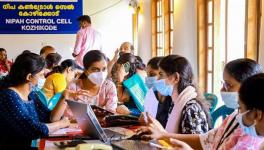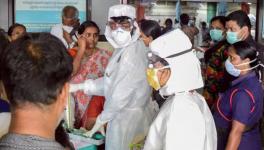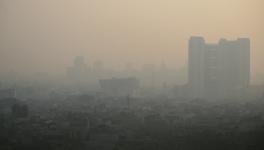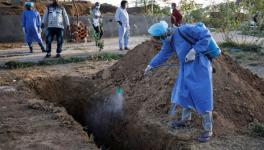Toxic Air in India Kills 1 out of Every 8 Indians: Lancet Study
Toxic air is taking away more lives in India than ever before. The latest study published in the Lancet Planetary Health Journal reveals that one out of every eight deaths in India last year can be attributed to toxins in the air. In 2017, air pollution claimed 1.24 million or 12.5% of the total deaths recorded that year.
The national capital, New Delhi, was most exposed to tiny particulate matter called PM 2.5, followed by Haryana and Punjab. These tiny particulate matters can travel deep down to the lung where they can cause severe damages to the tissue, leading to serious health problems.
Funded by the Bill & Melinda Gates Foundation, Indian Council of Medical Research, Department of Health Research, Ministry of Health and Family Welfare, Government of India, the study was done to estimate the exposure to air pollution and its impact on deaths, disease burden and life expectancy at the sub-national level.
Out of total deaths as a result of air pollution, about 6,70,000 died due to exposure in the wider environment, while 4,80,000 died from household pollution precisely related to the use of solid cooking fuels.
The average life expectancy in India in 2017 would have been higher by at least 1.7 years, had the air quality been within the healthy level, the report says. This, at least, gives some hope in comparison to some recent studies. The Chicago University report that was released last month projected that the average life expectancy of an Indian citizen is reduced by four years as a result of prolonged exposure to pollution.
India houses 18.1 % of the total world population. But health loss of India due to air pollution stands at a higher proportion in the global health loss. The study said that India recorded 26% of the global premature deaths and disease burden due to air pollution.
The Lancet paper says that “India has one of the highest annual average ambient particulate matter PM2·5 exposure levels in the world. In 2017, no state in India had an annual population-weighted ambient particulate matter mean PM2·5 less than the WHO recommended level of 10 μg/m3,45 and 77% of India's population was exposed to mean PM2·5 more than 40 μg/m3, which is the recommended limit set by the National Ambient Air Quality Standards of India.”
However, higher pollution levels do not necessarily lead to a high disease burden. For example, Delhi has a high ambient level of air pollution, yet the number of deaths is comparatively low. Uttar Pradesh recorded the highest number of air pollution-related deaths (2.60 lakh), followed by Maharashtra (1.08 lakh) and Bihar (96,967).
The popular notion of only linking air pollution with respiratory diseases has been contradicted by the study, which said that in India, the disease burden goes beyond mere respiratory diseases; it includes ischemic heart disease, stroke, chronic obstructive pulmonary disease and lung cancer—commonly associated with smoking.
The World Health Organisation (WHO) database of air pollution says that 14 out of 15 cities with air pollution of the worst kind are in India. The study also said that Mexico city and Beijing could be instructive in tackling extreme high pollution in New Delhi and other cities in India.
Get the latest reports & analysis with people's perspective on Protests, movements & deep analytical videos, discussions of the current affairs in your Telegram app. Subscribe to NewsClick's Telegram channel & get Real-Time updates on stories, as they get published on our website.
























